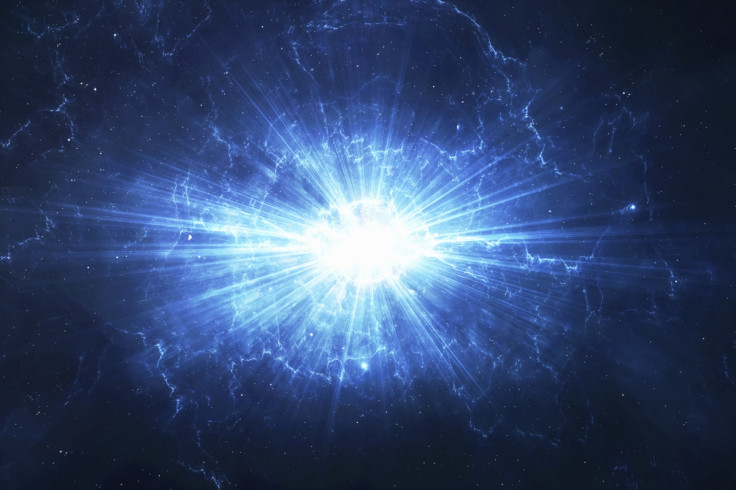Before the Big Bang there was another universe and a new one will emerge after ours collapses
New model of cosmology reveals the physics of the universe before the Big Bang.

The universe started with the Big Bang 13.7 billion years ago, but what was there before? Does this question even make sense? And can we really address this question scientifically? This is exactly what a team of scientists has tried to do.
In their new model of cosmology, the universe we see is just one in a cycle of many universes. Each of these universes has its own phases of expansion, contraction and a Big Bang.
In their study, published on the pre-print server arxiv.org, Maha Salah, Fayçal Hammad, Mir Faizal and Ahmed Farag Ali have been able to look at the state of the universe before its beginning, creating a model of pre-Big Bang cosmology.
The cosmology of the universe can be modelled using the Einstein's general theory of relativity. It predicts that the universe is expanding and the galaxies are all moving away from us. Also the further a galaxy is away, the faster it is moving away from us. This is used to predict the universe started with a Big Bang – if you reverse this expansion to go back in time, eventually we come to the point where the universe began.
At the point of Big Bang the laws of Einstein's general theory of relativity seem to break down and it is not possible to use them to understand how the Big Bang occurred. So, how did the Big Bang happen and can we describe physics before the Big Bang? Can we describe physics before the creation of the universe? According to the team's model, yes, we can.
They first used Jacobson's formalism of Einstein's general theory of relativity, where the Einstein equation is basically described as thermodynamical equation. They then studied the corrections to the Einstein equations from quantum effects.
There is no quantum theory of gravity, but there are many approaches to quantum gravity. All of these approaches seem to imply the structure of spacetime breaks down at a small length scale, so there is no spacetime below that scale. Many of these approaches also seem to indicate that there is a maximum energy in the universe, and you cannot really have an energy beyond that maximum energy.

Read more:
Big Bang from a Big Bounce: Our universe formed after another collapsed in on itself
The universe is expanding in all of the directions all of the time
Mini black holes in Large Hadron Collider 'could prove existence of parallel universes'
Faizal told IBTimes UK: "Our spacetime is only an approximation to some purely mathematical theory describing reality, and the geometry of spacetime emerges from this theory. Just as the geometry of any solid material objects emerges from atomic theory. It is meaningless to talk about the geometry of a solid object at atomic scale and it is also meaningless to talk about the geometry of solid object at such energies when they will melt.
"In the same way, it becomes meaningless to talk of the geometry of spacetime below a certain length scale and beyond a certain energy scale. However, the fact that the geometry of spacetime is bounded by a minimum length and a maximum energy can be used to study quantum gravitational effects on cosmology, and doing this we have been able to study the pre-Big Bang cosmology".
The team took these two inputs – that spacetime breaks down at a minimum length and that it is not possible for any object in this spacetime to have an energy beyond a certain maximum energy – and applied it to the thermodynamical description of general theory of relativity. What they ended up with was four distinct phases of the universe, supporting the idea of a cyclical universe.
"The equations imply that the expansion of the universe will come to a halt and then will immediately be followed by a contracting phase. When the equations are extrapolated beyond the maximum rate of contraction, a cyclic universe scenario emerges," they wrote.
"The Big Bang is not really the beginning of the universe, it is just a phase transition," Faizal said. "There was a phase before the Big Bang, there is the present phase, there will be a phase after this and then will yet another fourth phase. Then a new Big Bang will occur. So, the universe exists in four different phases, just a water exists in three different phases."
Initially, the team had thought they would be able to get the get the maximum density for the universe and get rid of the singularity. The result of a cyclical universe was a surprise. "That was amazing that we actually got our cyclic universe. And not only cyclic but with four distinct phases. We did not impose it. It just came out as a conclusion," Faizal explained.
The researchers say it will be a challenge to test their model.
Asked if it could be used to predict when the universe will fall in on itself, Faizal added: "I think it will be impossible to predict when the universe will collapse. But what we can predict is that it will collapse. So the right question is not when, it is will it. And will it? Yes."
© Copyright IBTimes 2025. All rights reserved.






















